WATCH CLOSELY: October on the Criterion Channel — Buckets of Blood and Beauty
By Peg Aloi
You want horror? This month Criterion Channel serves up plenty of cinematic chills, vintage and otherwise.
With Spooky Season (aka October) only half over (though please feel free to continue into Yuletide if you wish), there’s still plenty of time to partake in the Criterion Channel’s stellar lineup featured this month. It includes programs of ’80s horror, a terrific slate of vampire films, some Universal Studios horror classics, and a delightful program of films by Ishiro Honda, also known as the innovative filmmaker who gave us the Japanese monster movies featuring Godzilla, Mothra, Rodan, etc. There’s also an interview with contemporary horror master Ari Aster (part of the ‘Adventures in Moviegoing’ series) in which he talks about some of his favored films, as well as some new Criterion Collection additions and some premieres. I certainly haven’t seen all of these films, but I’d love to recommend some of my favorites that are on offer this month.
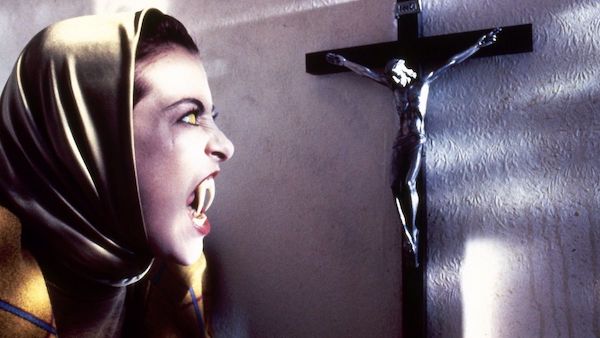
Amanda Donohoe in a scene from Lair of the White Worm.
The ‘80s Horror program contains some real gems, some of them criminally underseen, like Lair of the White Worm (a trippy, funny Ken Russell odyssey along the lines of his decadent film Gothic). It offers a wonderful mix of domestic and foreign arthouse picks. My top selection from this excellent roll-call is a film I consider one of the most terrifying films I’ve ever seen. I remember when I saw it in the theater I left feeling bereft, scared and haunted. It’s The Vanishing, a French-Dutch film by Georges Sluizer starring Johanna ter Steeke. It is a story about a young woman who disappears suddenly while on a drive with her boyfriend, and his decade-long efforts to discover what happened to her. John McNaughton’s Henry: Portrait of a Serial Killer stars Michael Rooker as a brutal killer whose cold, calculating ways both horrify and fascinate — and elude police’s efforts to apprehend him. There’s no question this film ushered in the now-ubiquitous cultural and media obsession with serial killers.
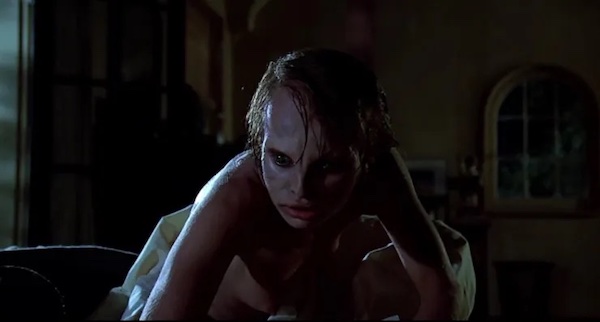
Nastassja Kinski in a scene from Cat People.
Paul Schrader’s 1982 remake of Val Lawton’s 1942 classic Cat People, set in a moody New Orleans, features a smolderingly-sexy Nastassja Kinski as a woman whose occasional transformation into a cat-like beast does not put off William Heard, who is drawn to her like a tabby to catnip. The Slumber Party Massacre, written by Rita Mae Brown and directed by Amy Holden Jones, puts a whip-smart satirical feminist spin on the ‘80s slasher film formula. Michael Wadleigh’s Wolfen (starring the iconic Albert Finney) is a glossy thriller that revolves around the attempt to solve a stream of grisly murder linked to a werewolf like killer. Not often seen, The House by the Cemetery is Italian horror master’s Lucio Fulci’s chilling tale of an urban family who moves to a strange and spooky rural mansion. I also recommend Tobe Hooper’s The Funhouse, a scary and atmospheric teen slasher set in a gritty carnival (yes, I am a sucker for any film that features a carnival, preferably gritty). Check out the entire program for more arthouse horror highlights from this rich decade of the gruesome.
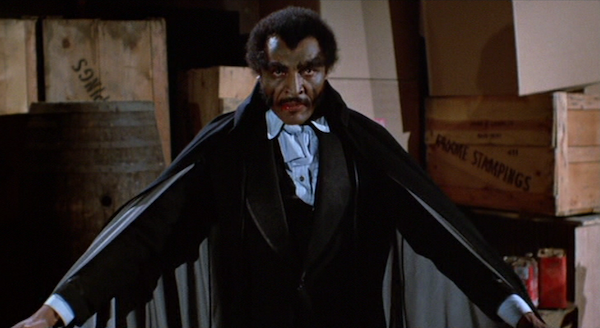
William Marshal in a scene from Blacula.
The vampire film selection showcases eighteen films ranging from ’30s black and white classics to contemporary masterpieces. Carl Dreyer’s 1932 Vampyr is gorgeously atmospheric, a Gothic mood piece set in rural France, steeped in chiaroscuro lighting and haunting vistas, featuring a truly terrifying takeover of a village by a blood-sucking predator. There are some excellent ’70s offerings, including the groundbreaking 1972 Blacula which reimagines the Bram Stoker character as a contemporary African-American man (which spawned a number of blaxploitation horror efforts, as well as the arthouse gem Ganga and Hess in 1973).
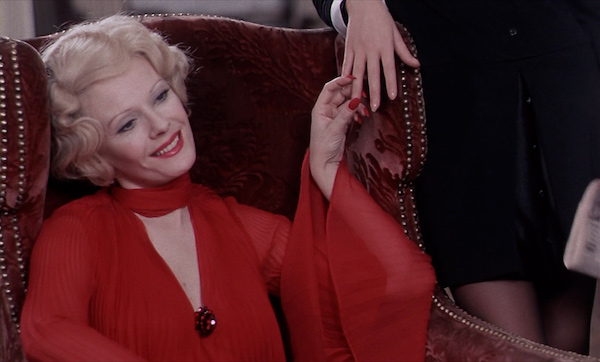
Delphine Seyrig as a seductive lesbian vampire in a Daughters of Darkness.
1971 gave us two excellent female-fronted vampire films: Stephanie Rothman’s Hollywood-adjacent thriller The Velvet Vampire and Daughters of Darkness, a Belgian update of the story of the legendary Elizabeth Bathory from Harry Kümel.It stars the glamorous Delphine Seyrig as a seductive lesbian vampire. Werner Herzog’s notorious production (fraught with behind the scenes drama) of Nosferatu the Vampyre stars Klaus Kinski, Isabelle Adjani, and Bruno Ganz. Two rarely-seen French films by Jean Rollin are stylish, erotic, and absorbing takes on vampire lore: Fascination (1979) (a fin de siècle fable of blood fetishism) and The Living Dead Girl (1982) (a resurrected heiress needs blood to survive). Tomas Alfredson’s chilling, visually stark Let the Right One In (2008) follows a lonely young boy who makes friends with a girl who has dark secrets. The hip, stylish “Iranian vampire western” A Girl Walks Home Alone at Night introduced Ana Lily Amirpour as a horror filmmaker to reckon with. The movie’s black and white cinematography is stunning and its eclectic soundtrack is perfectly curated. Other vampire cinema treasures: Kathryn Bigelow’s Near Dark (1987), Guillermo del Toro’s Cronos (1993), Robert Bierman’s Vampire’s Kiss (1988), Park Chan-Wook’s Thirst (2009), and Guy Maddin’s Dracula: Pages from a Virgin’s Diary (2002).
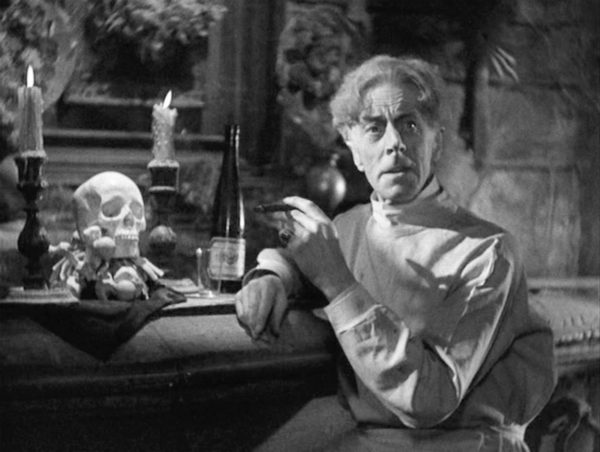
Ernest Theisger smoking a stogie in Bride of Frankenstein.
The Universal Horror Classics program offers films rarely seen on other streaming services. Tod Browning’s 1931 Dracula stars the iconic Bela Lugosi, arguably the most-famous screen incarnation of the Transylvanian count. Alongside this classic is a Spanish language version made at the same time, directed by George Melford (these films are cross-listed with the vampire film program). Other venerable titles include James Whale’s Frankenstein (1931) and Bride of Frankenstein (1935) starring Boris Karloff and Elsa Lanchester (including Ernest Theisger as one of cinema’s greatest mad scientists), as well as Whale’s 1933 science fiction/horror classic The Invisible Man starring Claude Rains. Karloff also stars in Karl Freund’s The Mummy (1932) and in Lew Landers’ The Raven (1935). Jack Arnold rounds out the Universal Horror era with 1954’s adventurous Creature from the Black Lagoon.

A scene from Godzilla: King of the Monsters.
Ishiro Honda’s hugely-influential series of Japanese monster movies (Kaiju eiga) were low-budget, but their inventiveness, groundbreaking animation and special effects approached genius. Inspired by the traumatic impact of the nuclear bombs dropped on Japan during World War II, his films work as both social commentary and science-fiction embellishments. His menagerie of enormous creatures — a distant nod to Hollywood’s King Kong — spawned by radiation and mutation (Godzilla, Mothra, and Rodan among them) were envisioned as terrifyingly destructive but also occasionally protective of humankind. The films, made between 1954 and 1965, include Godzilla, Destroy All Monsters, Mothra Vs. Godzilla, Ghidorah, the Three-Headed Monster, and Rodan.
Peg Aloi is a former film critic for the Boston Phoenix and member of the Boston Society of Film Critics. She taught film studies in Boston for over a decade. She writes on film, TV, and culture for web publications like Time, Vice, Polygon, Bustle, Mic, Orlando Weekly, and Bloody Disgusting. Her blog “The Witching Hour” can be found on substack.
Tagged: Ari Aster, Criterion Channel, Godzilla, horror films, Ishiro Honda, monsters, Mothra
